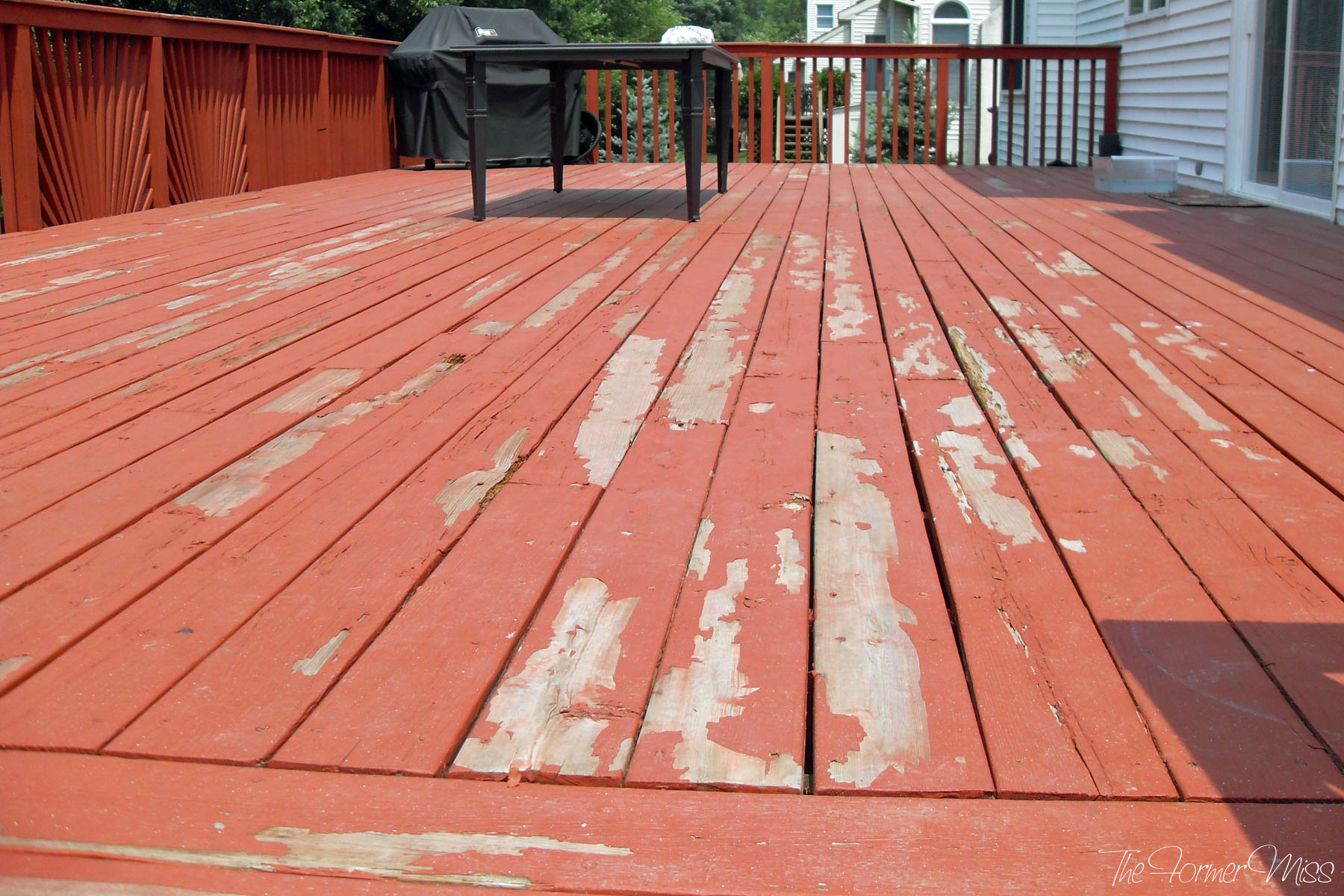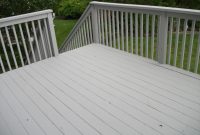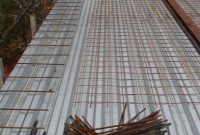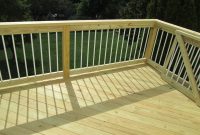 9 Big Signs You Should Have Your Deck Refinished about size 1800 X 1200
9 Big Signs You Should Have Your Deck Refinished about size 1800 X 1200Staining An Old Deck With Solid Stain: A Comprehensive Guide for Deck Maintenance
Staining An Old Deck With Solid Stain – Picture yourself enjoying a warm summer evening on your beautiful deck, savouring the tranquillity of the outdoors. However, over time, your deck may lose its lustre due to exposure to the elements. That’s where deck staining comes in. This comprehensive guide will delve into the world of staining an old deck with solid stain, providing you with tips, techniques, and valuable information to bring your deck back to life.
What is deck staining, and why is it important?
Deck staining involves applying a protective coat of stain to the wood surface, shielding it from weather damage and extending its lifespan. Regular deck maintenance, including staining, is crucial to prevent rot, decay, and deterioration caused by the sun, rain, and snow. By investing time and effort into staining your deck, you enhance its appearance, increase its value, and ensure it stands the test of time.
Understanding solid deck stain
Solid deck stain is a wood finish that provides a vibrant, opaque colour to your deck while offering protection. Unlike transparent or semi-transparent stains that allow the natural grain to show through, solid stain covers the wood’s surface completely, creating a uniform colour and concealing imperfections. Concrete stain is an excellent choice for older decks with significant wear and tear.
When should you apply solid deck stain?
Timing is crucial when it comes to staining your deck with solid stains. To achieve the best results, consider the following factors:
Ideal temperature and weather conditions
For optimal application, the temperature should range between 50°F and 90°F (10°C and 32°C). Avoid staining your deck on extremely hot or cold days, as it can affect the stain’s performance and drying time. Also, choose a low-humidity day to allow the paint to penetrate the wood effectively.
How often to reapply
The frequency of staining your deck depends on several factors, including the type of wood, the amount of foot traffic, and the weather conditions in your area. As a general guideline, plan to reapply solid deck stain every two to three years. However, inspect your deck regularly and look for signs that it requires staining sooner, such as fading colour or water absorption.
Signs that your deck needs staining
Perform a simple water test to determine if your deck is due for staining. Sprinkle a few drops of water onto the deck surface; your deck is adequately protected if it beads up. However, if the water soaks into the wood within a few minutes, it’s time to consider staining. Another sign is the loss of colour and the appearance of bare wood, indicating the need for a fresh coat of solid stain.
Why is staining an old deck important?
Staining an old deck is not just about aesthetics; it serves as a vital defence against weather damage, preserving the integrity of the wood and ensuring its longevity.
Protecting against weather damage
Mother Nature can be relentless, subjecting your deck to rain, snow, and harmful UV rays. Solid deck stain forms a durable barrier that shields the wood from moisture penetration, preventing warping, cracking, and rot. It also protects against the sun’s ultraviolet radiation, which can cause fading and discolouration.
Preventing rot and decay
As your deck ages, it becomes more susceptible to rot and decay. Staining with a solid stain helps repel water, reducing the chances of fungal growth, mould, and wood decay. By maintaining a dry and protected deck surface, you safeguard its structural integrity and ensure the safety of your family and guests.
Enhancing appearance and value
An old, weathered deck can bring down your property’s overall look and value. Applying a fresh coat of solid stain revitalizes your deck, giving it a renewed and vibrant appearance. Whether you prefer a classic wood tone or a bolder colour, solid deck stain offers a range of options to suit your style and complement your outdoor living space. A well-maintained deck adds curb appeal and increases the value of your home.
Which tools and materials do you need for staining an old deck?
Gather the necessary tools and materials before embarking on your deck staining project. Here’s a comprehensive list to get you started:
- Pressure washer or hose with a high-pressure nozzle
- Deck cleaner or mild detergent
- Scrub brush or broom
- Safety goggles, gloves, and protective clothing
- Plastic sheeting or tarps to protect surrounding areas
- Paint tray and roller or paintbrush
- Solid deck stain of your choice
- Stir stick or paint mixer
- Drop cloths or cardboard to protect nearby plants or furniture
- Sandpaper or a deck sander (if needed for surface preparation)
- Masking tape (if staining railings or other detailed areas)
Ensure your safety by wearing protective gear and working in a well-ventilated area. Cover any nearby plants, furniture, or delicate surfaces with plastic sheeting or tarps to prevent accidental staining.
Who can apply solid deck stain: DIY vs. hiring a professional?
Whether to tackle the deck staining project yourself or hire a professional depends on various factors, including your comfort level with DIY projects, the size of your deck, and the time and effort you’re willing to invest. Let’s explore both options:
DIY deck staining
Staining your deck yourself can be a rewarding and cost-effective choice. It allows you complete control over the process, ensuring that each step is completed satisfactorily. DIY staining also will enable you to choose the colour and brand of solid deck stain that best suits your preferences.
To ensure a successful DIY project, follow these tips:
- Plan and prepare: Familiarize yourself with the staining process and gather all the necessary tools and materials before starting. Make sure you have a clear understanding of the steps involved and the time required.
- Test the stain: Before applying it to the entire deck, test it on a small, inconspicuous area to ensure you’re satisfied with the colour and finish.
- Follow the manufacturer’s instructions: Different brands of solid deck stain may have specific instructions regarding application and drying times. Read and follow the manufacturer’s guidelines to achieve the best results.
- Apply even coats: Use a roller or brush to apply the stain evenly, working in manageable sections. Avoid applying too much colour, leading to uneven drying and poor adhesion.
- Allow proper drying time: Solid deck stain typically requires at least 24-48 hours to dry completely. Ensure that the deck is free from foot traffic, pets, and other potential sources of damage during this time.
By following these tips and taking your time, you can successfully stain your deck and enjoy the satisfaction of a job well done.
How to prep an old deck for the solid stain
Proper preparation is critical to achieving a long-lasting and beautiful finish. Follow these steps to prepare your old deck for solid stain:
Cleaning and repairing the deck surface
Begin by thoroughly cleaning the deck surface. Remove debris, dirt, or leaves using a broom or leaf blower. Use a pressure washer or a hose with a high-pressure nozzle for more stubborn dirt or stains. Apply a deck cleaner or mild detergent to the surface and scrub with a brush to remove ingrained dirt and grime. Rinse the deck thoroughly and allow it to dry completely.
Inspect the deck for any signs of damage or rot. Replace any loose or damaged boards and repair any structural issues before proceeding with the staining process. Taking care of repairs upfront ensures a solid foundation for the stain and prevents further damage to your deck.
Removing old stains or paint
If your old deck has an existing layer of stain or paint, you may need to remove it before applying solid deck stain. Several methods for removing old finishes include sanding, scraping, or using a chemical paint stripper. Choose the way that suits your deck and follow the manufacturer’s instructions for the best results. Wear appropriate protective gear when working with chemical strippers or sanding the deck.
Sanding and smoothing the deck surface
Sanding the deck surface helps create a smooth and even base for the solid stain. Use a deck sander or sandpaper with medium to fine grit to sand the wood. Pay extra attention to areas with splinters or rough patches. Once you’ve sanded the entire surface, remove any dust or debris using a broom or vacuum cleaner. A clean and smooth surface ensures better adhesion and a more professional finish.
Whose deck benefits most from solid stain?
While solid deck stain can be suitable for various decks, it mainly benefits older wood that has experienced significant wear and tear. Here’s why:
Identifying the type of wood and its age
Different types of wood have distinct characteristics and require additional maintenance approaches. Identifying the type of wood your deck is made of helps determine the most suitable stain and treatment. Consult a professional or use online resources to determine the wood used in your deck. Additionally, the age of the wood plays a role in its condition and overall appearance, making solid deck stain an ideal choice for older decks.
Advantages of solid stain for older wood
Older wood often exhibits signs of ageing, including cracks, splinters, and discolouration. Solid deck stain covers these imperfections effectively, providing a uniform colour and a fresh, renewed appearance. Solid colour offers excellent UV protection and prevents further weathering, ensuring the durability and longevity of your deck.
Using solid stain as a colour match option
If your deck has patches of different types of wood or you’ve replaced damaged boards over time, the solid stain can help create a cohesive and consistent look. You can achieve a unified appearance throughout your deck by choosing a colour that matches or complements the existing wood.
Whom to contact for deck staining services?
Hiring a professional contractor can be a great option if the DIY route seems overwhelming or you prefer to leave the deck staining to the experts. Here are some tips for finding a reliable deck staining service:
Choosing a reliable contractor
Research local contractors specializing in deck staining and ask friends, neighbours, or online community groups for recommendations. Look for experienced professionals with a good track record and positive customer reviews. Verifying the contractor’s licenses, insurance coverage, and certifications is also essential.
Checking references and credentials
Before finalizing a contractor, ask for references and take the time to contact previous clients. Inquire about their experience with the contractor, the quality of the work performed, and the level of professionalism displayed. Additionally, check if the contractor is affiliated with professional organizations or has received industry awards or certifications.
Contract and payment considerations
Once you’ve selected a contractor, ensure all project details, timelines, and costs are clearly outlined in a written contract. Review the agreement carefully and address any concerns or questions before signing. Be wary of contractors who request full payment upfront; standard practice is to make a partial payment as a deposit and the remainder upon satisfactory project completion.
Conclusion
Your deck is more than just an outdoor space; it’s an extension of your home and a place to create lasting memories. Staining an old deck with solid stain offers many benefits, from protecting against weather damage to enhancing its overall appearance and value. Whether you embark on a DIY project or hire a professional, the information and techniques provided in this guide will help you achieve a beautiful and long-lasting finish.
Investing time, effort, and care into your deck maintenance pays off in the long run. Regular staining and upkeep ensure that your deck remains a welcoming haven for relaxation and entertainment, providing you and your loved ones with many enjoyable years ahead. So, don’t wait any longer—rejuvenate your old deck with solid stain and let it shine again!



